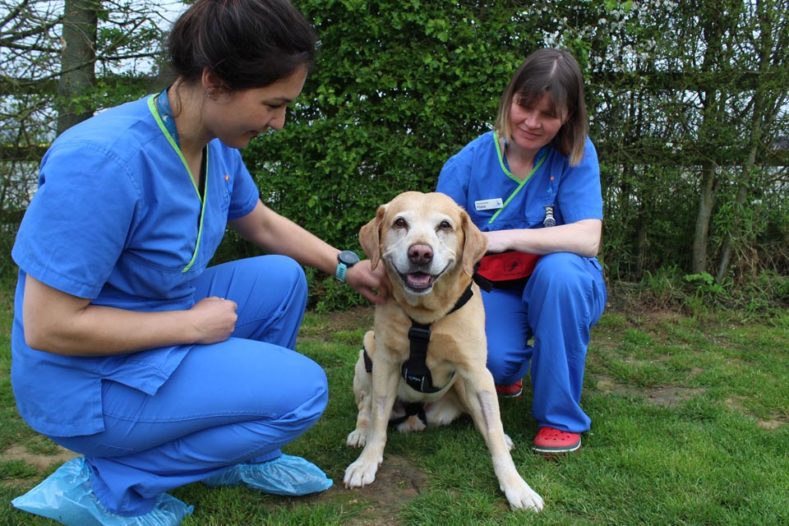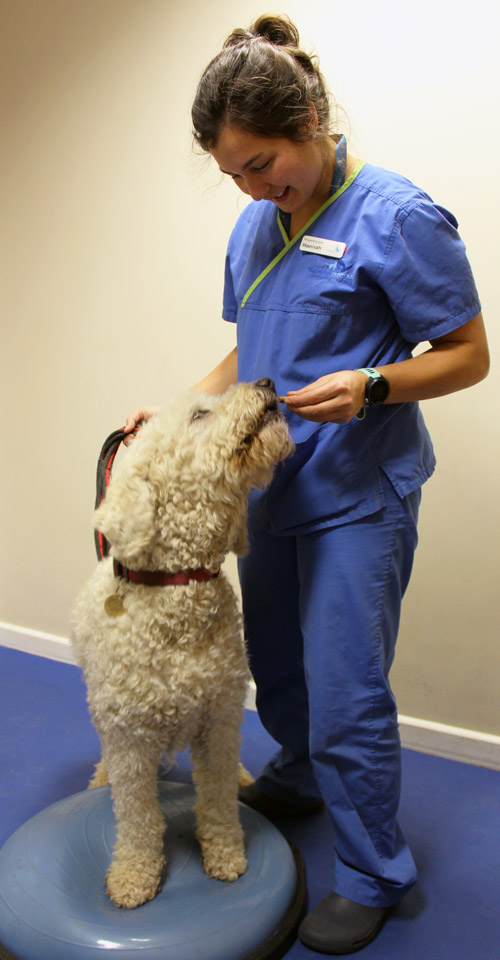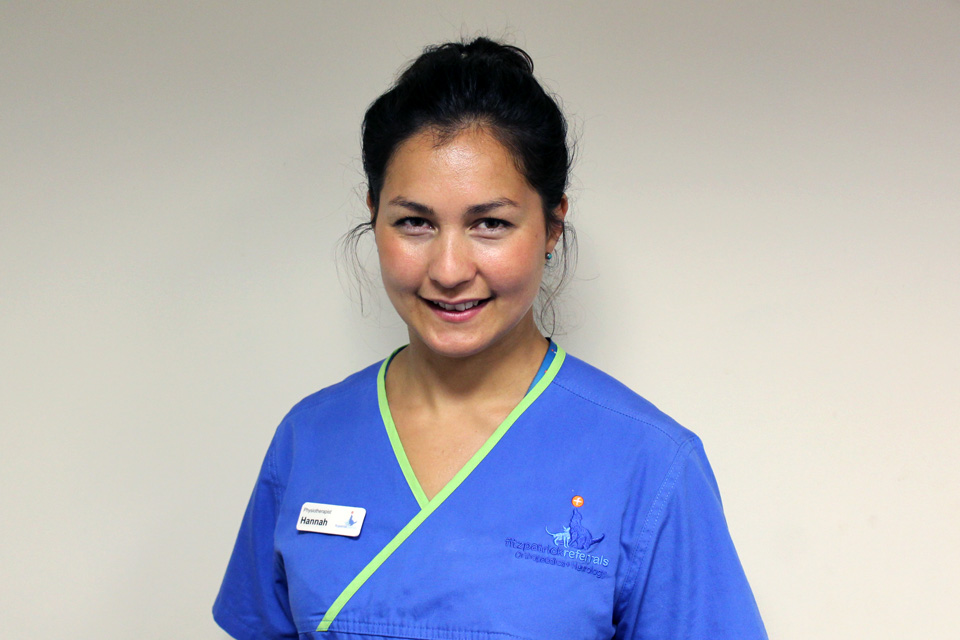Hannah Carmichael is a chartered physiotherapist and talks about her journey from human physiotherapy graduate to animal physiotherapist at Fitzpatrick Referrals in Surrey.
What drew you into a career as a physiotherapist?
Spending time building a rapport with both animal and human clients is integral to my job as a physiotherapist and attracted me to the role. My role at Fitzpatrick’s has allowed me to work in such a way as to give each animal the amount of time that it needs – which can often initially take some investment in time early on but generally what I find is that after a few sessions, an animal will start to relax and be able to focus on the therapy.
This is especially true once you initiate a routine and structure to the session in a predictable way. This is of most relevance to the neurological cases that we see after undergoing spinal surgery often when the animal has a paraplegia and is at their most vulnerable. The other main attraction is the practicality of the job and the hands-on nature.
I enjoy the challenge of handling all types of patients and using my honed palpatory skills to assess soft tissue state in order to identify underlying issues. This is especially true of the orthopaedic patients who are offloading a limb and compensating through other soft tissues for example around the thorax, this is a very common area that can be treated with hands-on therapy.
I also enjoy interpreting guidelines and offer sometimes novel and unique treatments, a colleague once said that physiotherapy isn’t an exact science and have found this to be very true. What literature tells you and what actually works can be two completely different things and sometimes you have to go with what works for an individual patient.

What training did you require to become a physiotherapist?
I have a Bachelor of Science in Physiotherapy from Kings College London and am a member of both The Chartered Society of Physiotherapy (CSP) and The Health Care Professions Council (HCPC). Both of which have professional development guidelines and requirements. Further to this, I have also completed a Postgraduate Diploma in Veterinary Physiotherapy.
There are now a number of different routes to completing this qualification but as I am a chartered human physiotherapist, I am now also a member of The Association of Chartered Physiotherapists in Animal Therapy or ‘ACPAT’ a branch of the Chartered Society of Physiotherapy. This has its own requirements for professional development – meaning that I have not only completed an accredited course but that I am also responsible for regularly updating my own knowledge in my areas of practice.
How has your training benefited your career and impacted your role at Fitzpatrick Referrals?
Becoming a Category A ACPAT therapist has been a challenge but well worth it. Most importantly, my course has given me the skills to not only review evidence in a critical manner to establish both in theoretical and practical terms which are the best techniques and therefore, ensuring that practice is maintained at a gold standard. But also an understanding of the legal requirements of my profession, for example, ensuring that I always gain consent from the veterinarian prior to treating an animal.
Most importantly, my nine years of working as a human therapist has given me the opportunity to build up my experience and understanding of managing acute and chronic musculoskeletal conditions and co-morbidities, and this has been pivotal when working in veterinary practice.

How does working referral side differ to primary practice?
At Fitzpatrick’s, we see anything from Poly radicular neuropathy (PRN) a neurological condition which can cause patients to become non-ambulatory, to patients who have had routine Tibial Plateau Levelling Osteotomy (TPLO) surgery.
I also work alongside a number of specialists in different areas which you wouldn’t always find in primary practice. Although I don’t have extensive experience working in primary practice, the variety and speciality of the cases attracts me to working at a referral practice.
What sorts of cases do you treat in referral practice?
It ranges and can include neurological cases such as those undergoing routine surgical procedures such as a hemilaminectomy due to disc extrusion or being conservatively managed after FCE (Fibrocartilagenous Embolism) to orthopaedic cases such as animals with multiple fractures after being involved in road traffic accidents.
Most pertinently, it is useful and important to draw upon experience from working in an acute human orthopaedic and stroke rehabilitation setting to guide my assessment and clinical reasoning.
What advice would you give to physiotherapists are who are interested in stepping into a career in animal physiotherapy?
Firstly get some work experience to fully understand the physicality and demands of the role. Opportunities to work in referral practices are amazing but hard to come by. Most veterinary physiotherapists are self-employed and generally work alone.
Secondly, as there are a number of different training routes, do your research to find the best one for you. There are many changes going on in the industry at the moment so have a look The Register of Animal Musculoskeletal Practitioners (RAMP) and check that the course you are looking at is recognised by them.
Read more about our Physiotherapy Services
Article originally published in Animal Therapy magazine issue 16, 2019.
5 minute read
In this article






